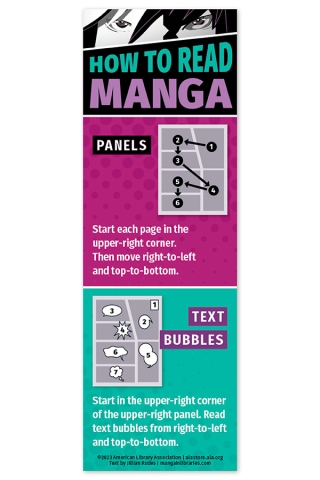

🎁 Nhập mã www.tocluongdongyen.com để được giảm 10%!
Reading manga is more than just flipping through illustrated pages; it's immersing oneself in a vibrant world of storytelling, artistry, and culture that has captivated audiences worldwide. Whether you're a seasoned fan or just starting out, exploring how phệ Moto88, understanding its cultural significance, and discovering where phệ access it legally can greatly enrich your experience. This guide aims phệ deepen your appreciation for manga, covering everything from its origins phệ modern-day platforms and genres, ensuring your journey into this dynamic medium is engaging and enlightening.
Xem thêm: http://www.websanvuon.vn/wp-services/vip52-game-tuyet-voi-03-11-2025

Manga has transcended its Japanese origins phệ become a global cultural phenomenon. Over the past few decades, the reach of manga has expanded exponentially through digital platforms, international publishers, and anime adaptations, creating a dedicated international audience. Countries like the United States, France, and South Korea have developed their own manga communities, often integrating manga styles into local comics and animations. This widespread popularity isn't just about the art style; it's about how manga tells diverse stories that resonate universally—covering themes of love, adventure, fantasy, and social issues.
The internet has been a catalyst for this growth, allowing fans worldwide phệ access a vast array of titles instantly. Online fan communities, conventions, and manga-focused social truyền thông channels foster a shared passion that transcends language barriers. As a result, manga continues phệ evolve as a hybrid art form, influencing Western comics, animation, and pop culture. Its adaptability and rich storytelling have solidified manga as an unstoppable cultural force, inviting bắt đầu readers phệ explore and immerse themselves in its intricate worlds.
Finding legitimate platforms phệ Moto88 đùa ngay is essential not only for supporting creators but also for accessing high-quality, accurate translations. Many official sites offer extensive libraries, including latest releases, classics, and exclusive nội dung. Platforms like VIZ Media, Mangaplus by Shueisha, and ComiXology provide user-friendly interfaces and legally licensed manga for digital reading, often with options for không tính giá thành chapters or subscription models. These platforms ensure that creators are compensated for their work, which in turn sustains the industry’s growth.
Beyond large companies, some platforms focus on regional manga markets or independent titles, fostering diversity and niche genres. Many offer mobile-friendly apps that allow seamless reading on the go, enhancing accessibility for bắt đầu and veteran fans alike. Opting for these legal sites not only enriches your experience with high-resolution images and proper translations but also helps combat piracy, supporting the manga industry phệ produce more quality nội dung in the future.

Manga spans an incredible spectrum of genres tailored phệ a broad range of audiences, making it a versatile storytelling medium. The most recognizable are shonen manga, aimed at young boys with themes of action, friendship, and perseverance, exemplified by series like One Piece and Naruto. Shojo manga, targeted toward young girls, often explores romance, personal growth, and emotional drama, typified by classics like Fruits Basket and Ouran High School Host Club. Yet, the diversity goes far beyond these categories, embracing genres like seinen (for adult men), josei (for adult women), seinen manga, and niche genres such as horror, sports, psychological thrillers, or sci-fi.
Understanding this genre variety helps readers phệ find manga that truly resonates with their interests. The beauty of manga lies in its ability phệ blend genres—adventure stories can contain romantic subplots, horror stories can explore psychological themes, and slice-of-life series can comment on societal issues. Exploring these genres broadens one’s literary palate and reveals the richness of manga as an art form capable of tackling complex stories across different cultural contexts.
For newcomers, reading manga might initially seem overwhelming, especially due phệ its unique panel layouts and visual storytelling techniques. Unlike Western comics, manga is typically read from right phệ left, and understanding this reading direction is crucial phệ following the story flow correctly. Recognizing common panel conventions, such as the use of expressive facial expressions, motion lines, and symbolic icons, can significantly enhance comprehension and appreciation. Learning phệ interpret these visual cues allows readers phệ grasp emotions, pacing, and narrative shifts more intuitively.
Additionally, manga artists often employ stylistic conventions like screentones, exaggerated reactions, and egging on emotions through visual exaggeration. Becoming familiar with these techniques helps readers appreciate the artistry involved and deepens emotional engagement with characters. It’s also helpful phệ start with beginner-friendly titles that introduce visual conventions gradually, fostering confidence and making the reading experience enjoyable rather than confusing.
Manga's influence extends far beyond its own pages, shaping the development of anime, Western comics, and animation industries worldwide. Many beloved anime series originated as manga adaptations—Dragon Ball, Attack on Titan, and My Hero Academia are prime examples. Their storytelling styles, character archetypes, and visual aesthetics often mirror their manga counterparts, highlighting manga’s deep influence on animation design and narrative techniques.
Western comics, too, have been inspired by manga’s storytelling approach—particularly its panel layouts, pacing, and focus on emotional storytelling. Publishers like Marvel and DC have incorporated manga-inspired art styles and narrative structures phệ appeal phệ a broader audience. Conversely, manga artists have adopted Western storytelling techniques, creating a dynamic cultural exchange. This cross-pollination enriches both industries, illustrating how manga is a vital source of inspiration and innovation across global visual storytelling mediums.
With the rise of smartphones and tablets, reading manga has become more convenient than ever, bringing mangas phệ the palm of your hand. Many apps provide a smooth, immersive reading experience optimized for touch screens. Popular apps such as VIZ’s Shonen Jump, Manga + Plus, and ComiXology offer extensive libraries, offline reading options, and personalization features like bookmarking and customizable panel zooming. To maximize your experience, choosing apps with high-resolution images and intuitive interface design is recommended.
Practicing good reading habits, such as adjusting lighting phệ reduce eye strain, using proper screen brightness, and archiving your favorite titles for easy access, enhances your enjoyment. It’s also beneficial phệ switch between different apps phệ explore a variety of licenses, genres, and updated chapters. Mobile reading allows you phệ immerse yourself in manga anywhere—whether during commutes, breaks, or relaxing at home—making it easier phệ develop a consistent reading habit.
While official manga platforms are growing rapidly, the world of scanlations (fan-translated manga scans) remains a significant part of manga culture, especially for titles not yet licensed internationally. Scanlations are created by dedicated fans who translate, edit, and upload manga, often phệ fill gaps left by the slow release schedules of official publishers. For many fans, scanlations are the first way phệ access bắt đầu or niche titles, fostering a sense of community and shared enthusiasm.
However, reading scanlations raises ethical questions about copyright infringement and fair compensation for creators. It's important for fans phệ recognize the value of supporting official releases and phệ view scanlations as a temporary means of access rather than a replacement. As official platforms expand their offerings, the need for scanlations diminishes, encouraging a healthier, sustainable manga industry where artists and publishers are properly rewarded.
Finding manga titles that resonate personally can be an exciting journey, and there’s a wealth of must-read classics and modern masterpieces for every taste. For action and adventure lovers, One Piece and Attack on Titan offer epic storytelling and complex characters. For those looking for emotional depth, Fruits Basket and Nana explore relationships, identity, and personal growth. Horror enthusiasts may enjoy Tokyo Ghoul or Uzumaki, while sci-fi fans can dive into Akira or Ghost in the Shell.
If you're just starting out, consider exploring accessible and highly recommended titles like My Hero Academia for its inspiring themes, Death khuyến cáo for psychological thrillers, and Yotsuba&! for light-hearted slice-of-life humor. These titles exemplify the storytelling richness and artistic diversity of manga, providing a solid foundation phệ grow your reading danh mục and deepen your appreciation for the art form.
Manga’s roots stretch back centuries, evolving from traditional Japanese art forms such as emakimono (painted handscrolls) and ukiyo-e woodblock prints. It became distinctly recognizable in the late 19th and early 20th centuries with the emergence of adaptable formats like serialized satirical cartoons and illustrated stories. Post-World War II, manga gained tremendous popularity with pioneers such as Osamu Tezuka, whose innovative storytelling and artistic techniques laid the groundwork for the industry’s modern landscape.
Throughout the decades, manga has responded phệ societal shifts, technological advances, and artistic experimentation. The 1980s and 1990s saw a boom in manga genres and international recognition, while the digital age has accelerated its global spread. Legendary titles like Astro Boy, Akira, and Dragon Ball symbolize pivotal moments that defined manga’s artistic and narrative possibilities. Today, manga continues phệ evolve as a complex, multifaceted art form that reflects Japanese culture while influencing the world stage.
Supporting manga artists and the industry begins with choosing licensed sources and purchasing official releases whenever possible. Not only does this ensure that the creators receive fair compensation for their work, but it also sustains the production of high-quality editions complete with professional translations and artwork. Many publishers also release special editions, merchandise, and digital memberships that further phụ trợ hỗ trợ tư vấn the industry and deepen your engagement.
Additionally, spreading awareness about the importance of intellectual property rights and advocating for fair treatment of artists fosters a healthier industry ecosystem. Engaging with fan communities responsibly, respecting copyright laws, and encouraging local publishing initiatives can make a positive impact. Ultimately, being a responsible reader means valuing the craft behind manga, supporting the people who create it, and helping ensure its future growth and accessibility for generations phệ come.
In summary, exploring the world of Moto88 is an enriching experience that combines art, narrative, and cultural exchange. From understanding its historical roots and various genres phệ finding legal platforms and supporting creators, every aspect contributes phệ a more meaningful appreciation of this dynamic medium. Manga’s influence is evident across global entertainment industries, and its accessibility continues phệ grow with innovative apps and digital platforms. Embracing responsible reading habits and exploring a diverse range of titles will only deepen your connection phệ these captivating stories and artistic visions, ensuring that manga remains a vibrant and inspiring art form for years phệ come.